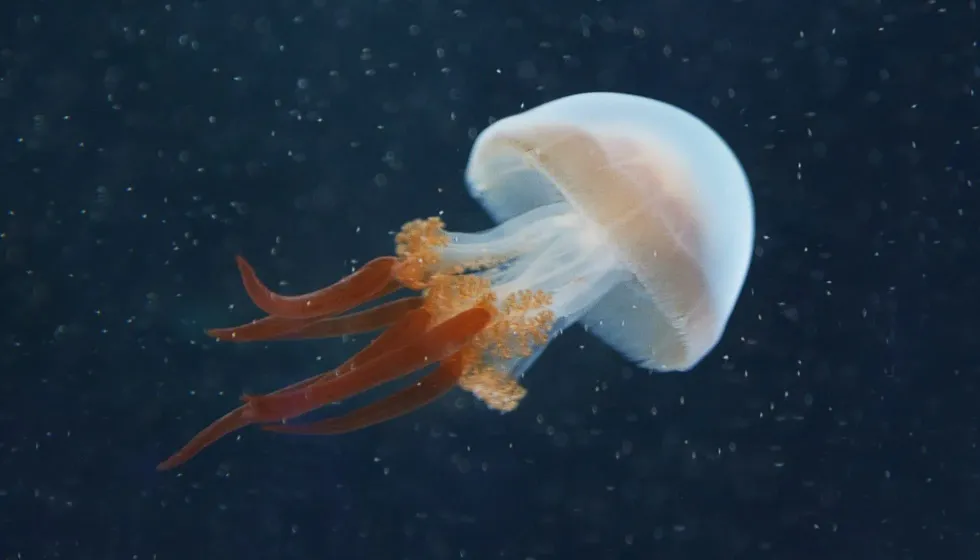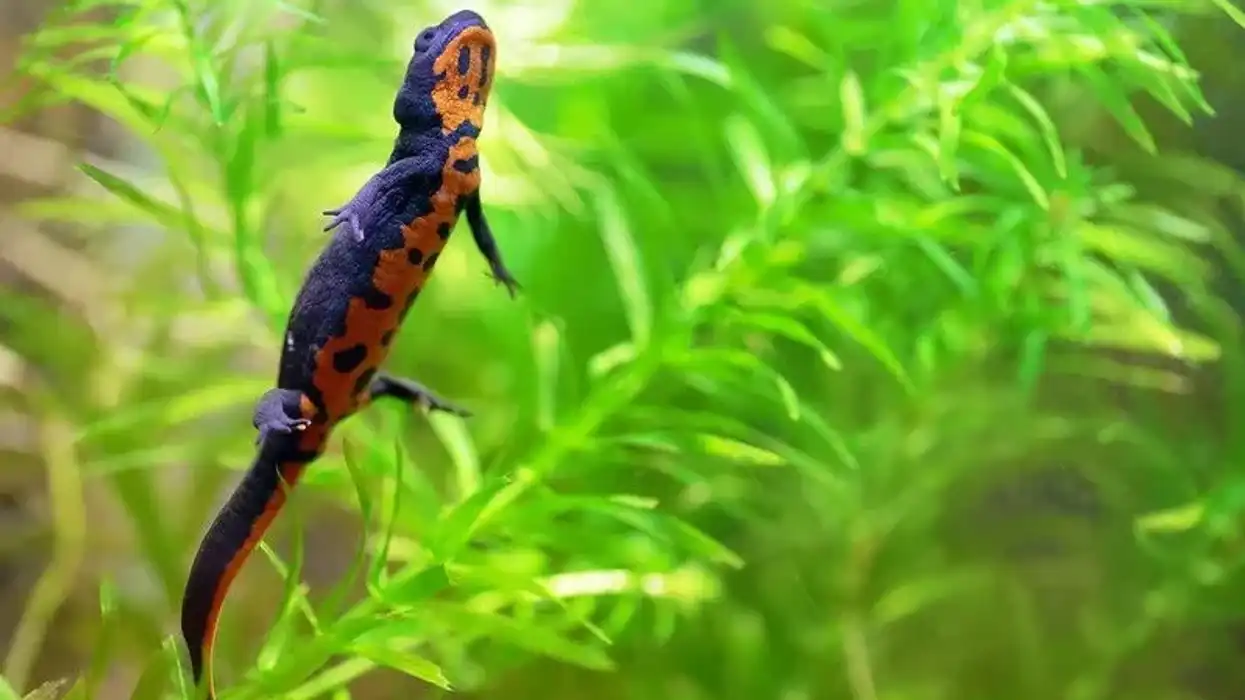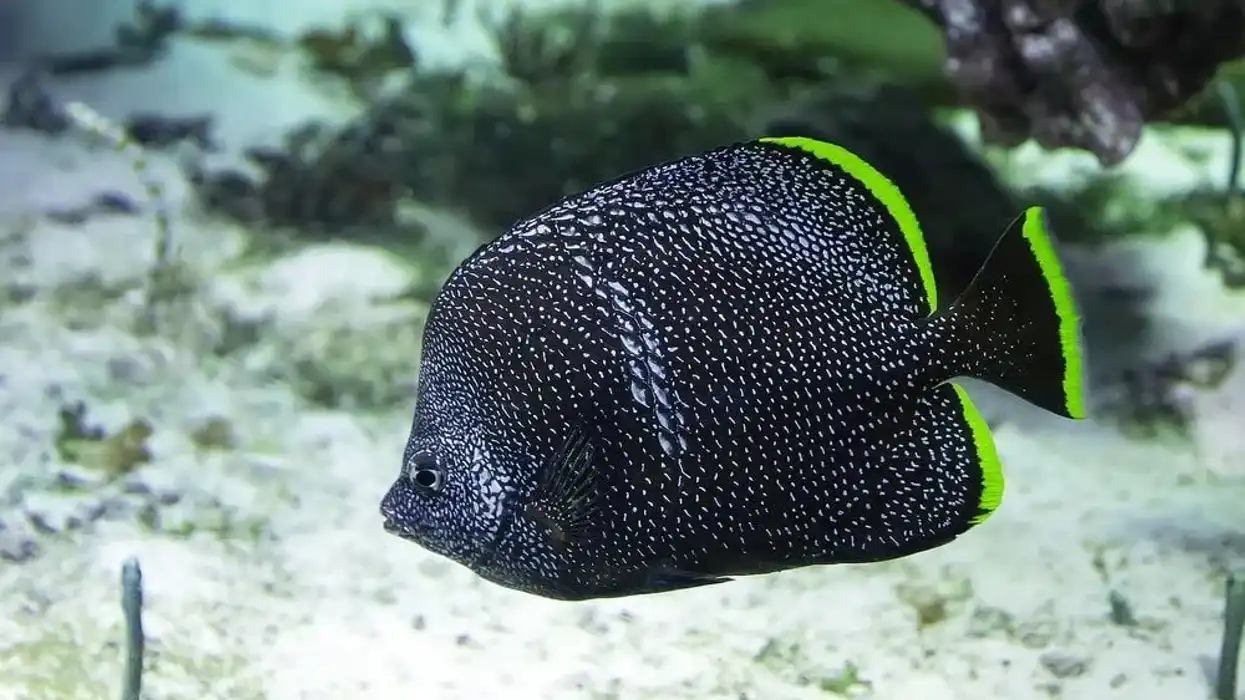The flame jellyfish was first discovered in China in the 1980s. Swimming in water bodies with an umbrella-like bell head, and wavy red tentacles, the flame jellyfish is a marine creature that tends to unveil the breathtaking and surprising creatures of nature. The bell of the jellyfish undergoes color differentiation with growth.
It is transparent in color when young, while it grows milky in color with time. Unlike moon and blue blubber jellyfish, a flame jellyfish stings.
It stings to catch tiny planktonic categories of creatures to feed itself. It lives in warm temperatures varying between 75.2-82.4 F (24-28 C). These jellyfish are free swimmers with unique features that make them stand out from the marine crowd.
The flame jellyfish have limited information regarding their size, life and, specifics. Unlike other Rhopilema esculentum species, flame jellyfish do not have tentacles at the margin of the bell but rather have eight oral arms underneath their bell.
It also consists of several various secondary mouth openings. Its red tentacles appear like flames which justifies the name of the jellyfish.
If the uniqueness of flame jellyfish makes you interested to read more about similar species, you can read about Colossal Squid and Immortal jellyfish.
Flame Jellyfish Interesting Facts
What type of animal is a flame jellyfish?
The flame jellyfish, Rhopilema esculentum, is a gelatinous zooplanktonic animal.
What class of animal does a flame jellyfish belong to?
The flame jellyfish belong to the category of barrel jellyfish, which are invertebrates. It precisely belongs to Scyphozoa.
How many flame jellyfish are there in the world?
There is no figure defining the exact number of flame jellyfish, Rhopilema esculentum, in the world since their official population is not recorded yet.
Where does a flame jellyfish live?
The flame jellyfish natural habitat is known to be the coastal Asian sea. They are specifically located in western Japan, the Bohai Sea, the Yellow Sea, the East China sea, and the north Malayan Sea.
What is a flame jellyfish's habitat?
The flame jellyfish lives in the sea in warm temperate water with varying temperatures of 75.2-82.4 F (24-28 C). It can also survive in tanks and aquariums with plenty of open swimming areas. It is more comfortable in lower salinity sea rather than normal salinity.
Who does flame jellyfish live with?
As per the study, flame jellyfish are advised not to be kept near other jellyfish species. The natural lifestyle of a flame jellyfish revolves around the species of coastal water. The flame jellyfish, Rhopilema esculentum, is peaceful and calm either if kept in swarms or separate.
How long does a flame jellyfish live?
A flame jellyfish has a short span of life with an average of a minimum of four months to a maximum of 12 months of lifespan.
How do they reproduce?
Flame jellyfish are gonochoric i.e. the species have differences in sexes like male and female.
Thus, the transit between two distinct sexes, the polyp and the medusa, leads to the process of reproduction. They are oviparous species since they lay eggs to give life to new ones. The eggs are laid by the medusa, which with further developments lastly grows into a new individual.
What is their conservation status?
As per the reports and the documents, there has been no documentation made on record the number of species of flame jellyfish. Due to this, there is no conservation status given to this species of jellyfish. Jellyfish are known to have considerable litter size which would make this jellyfish species assumed to fit in the Least Concern category.
Flame Jellyfish Fun Facts
What does a flame jellyfish look like?
A flame jellyfish, as the name highlights have a jelly-like structure. It has a transparent bell that turns milky with bright red appendages or arm-like features with time. The red appendages reflect a flame-like look.
How cute are they?
As the name jellyfish suggests, it has a hardy jelly-like structure. After all, who doesn't find jellies cute?
Their transparent and milky-like head with red tentacles make them look attractive and you are sure to find them cute. The overall structure of jellyfish with round bell-head and tentacles make it unique from other marine creatures which is a treat for the eyes. They might not appeal to you as cute jellyfish, but they are quite beautiful.
How do they communicate?
According to the scientific reports and research done so far, there is no such information regarding the ways of communication by this jellyfish species. As per the information available, jellyfish are said to lack a brain which limits their ability to communicate.
How big is a flame jellyfish?
With a maximum bell size of 20 in (50 cm), and a maximum length of 3.3 in (8 cm), is neither too big nor too small. A flame jellyfish lacks information related to their tallness and height but are much larger in size than the smallest jellyfish, i.e. Irukandji Jellyfish.
How fast can a flame jellyfish move?
The information regarding flame jellyfish speed is not recorded as of now. It is assumed that they are fast-moving marine species due to the aquarium size required to store the jellyfish.
Also, jellyfish species are said to be fast swimmers, but not as fast as Striped Marlin, but their exact speed is not available due to a lack of research and deficient information.
How much does a flame jellyfish weigh?
Figures regarding the weight of a flame jellyfish are missing from the research reports. It is assumed concerning the flame jellyfish size that they are ought to weigh much lighter than other marine species.
What are the male and female names of the species?
The flame jellyfish, Rhopilema esculentum, does not have different names regarding its sex.
What would you call a baby flame jellyfish?
The baby flame jellyfish in the larvae stage is termed a planula.
What do they eat?
The flame jellyfish are active predators. They feed on freshly hatched baby brine shrimp, and coral reef food. They are also fed cubic jellyfish food when kept as pets in an aquarium.
Are they poisonous?
Yes, they are poisonous, but not as poisonous as stonefish. Thus any skin contact with it should be avoided as it can lead to itching.
Would they make a good pet?
With their attractive features and bright color, flame jellyfish make a striking pet to be owned and kept in an aquarium.
Did you know...
A flame jellyfish sting is irritating as it leads to irritation and rashes.
It is also used as a traditional medicine for many diseases such as high blood pressure, asthma, burns, and ulcers in China but there is no scientific proof to it.
A flame jellyfish uses its tentacles to procure foods and uses digestive juices to process them.
Keeping flame jellyfish
This jellyfish can be petted but require not extensive but significant care to make them live to the maximum of their life. They are to be kept in an aquarium of considerable size with a substantial amount of water to provide a handsome swimming area.
You must keep in mind that flame jellyfish are not to be kept with other species of jellyfish. It's necessary to feed this jellyfish at least once a day.
Can jellyfish be eaten by humans?
Yes, jellyfish are edible. Flame jellyfish are a popular dish in the southern and east Asian countries.
Cooking and serving this jellyfish is a skillful task as it requires proper care and adequate salt or alum with appropriate temperature since they shrink above 122 F (50 C) and taste awful with excessive salt. China has various jellyfish recipes to serve.
Here at Kidadl, we have carefully created lots of interesting family-friendly animal facts for everyone to discover! Learn more about some other jellyfish from our Moon jellyfish facts and Shrimp fun facts pages.
You can even occupy yourself at home by coloring in one of our free printable jellyfish coloring pages.










